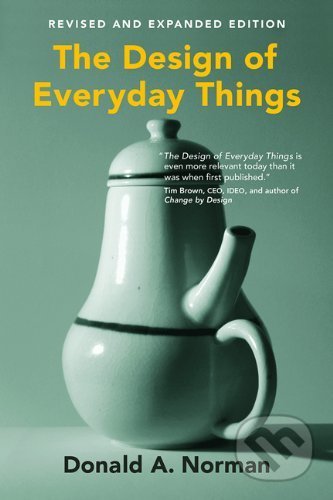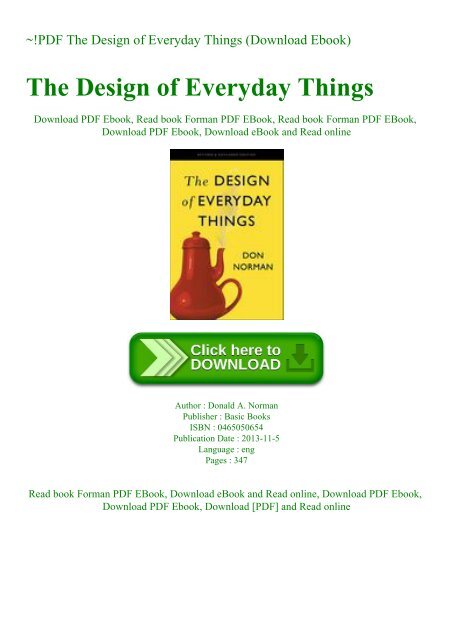

Section 1: How People Do Things: The Gulfs of Execution and Evaluation
 Using good conceptual models and quality feedback, we can accommodate human behavior. Failure is a gift that aids learning, exploration, and creativity. People are inclined to make stories about the objects they interact with, and without external direction, they will create their own ideas (their own conceptual model) which can lead to inappropriate understanding, use, and experience of an object. The Three Levels of Processing: visceral, behavioral, and reflective map to the Seven Stages of Action. Subconscious thought (fast and automatic, geared towards regularity), conscious thought (slow and deliberate, comparative, and logical), and emotion are both important to design. Norman outlines seven stages of an action, which are largely subconscious like most of the brain’s activity (because of “overlearning”) except when we’re learning something new. Yep, the “bridge of execution” and the “bridge of evaluation” utilize the Seven Fundamental Design Principles from the last chapter. The designer's job is to facilitate the crossing of these gulfs with “bridges”. There are two “gulfs” users have to get over to use a thing: the “gulf of execution” and the “gulf of evaluation”. “It is the mechanical thing that should be apologizing, perhaps saying, “I’m sorry. This series summarizes and reviews each chapter, highlighting important takeaways and asking questions about the content.Ĭhapter 2 is both packed with lots of information, but also reiterations on concepts from the last chapter, “The Psychopathology of Everyday Things.” Norman revisits the seven fundamental design principles and introduces (at times helpful) new terms to navigate all the concepts being conveyed. Hi & welcome! Thanks for joining in on my journey through “The Design of Everyday Things,” by Don Norman.
Using good conceptual models and quality feedback, we can accommodate human behavior. Failure is a gift that aids learning, exploration, and creativity. People are inclined to make stories about the objects they interact with, and without external direction, they will create their own ideas (their own conceptual model) which can lead to inappropriate understanding, use, and experience of an object. The Three Levels of Processing: visceral, behavioral, and reflective map to the Seven Stages of Action. Subconscious thought (fast and automatic, geared towards regularity), conscious thought (slow and deliberate, comparative, and logical), and emotion are both important to design. Norman outlines seven stages of an action, which are largely subconscious like most of the brain’s activity (because of “overlearning”) except when we’re learning something new. Yep, the “bridge of execution” and the “bridge of evaluation” utilize the Seven Fundamental Design Principles from the last chapter. The designer's job is to facilitate the crossing of these gulfs with “bridges”. There are two “gulfs” users have to get over to use a thing: the “gulf of execution” and the “gulf of evaluation”. “It is the mechanical thing that should be apologizing, perhaps saying, “I’m sorry. This series summarizes and reviews each chapter, highlighting important takeaways and asking questions about the content.Ĭhapter 2 is both packed with lots of information, but also reiterations on concepts from the last chapter, “The Psychopathology of Everyday Things.” Norman revisits the seven fundamental design principles and introduces (at times helpful) new terms to navigate all the concepts being conveyed. Hi & welcome! Thanks for joining in on my journey through “The Design of Everyday Things,” by Don Norman. 
Summary and Review of “The Design of Everyday Things,” by Don NormanĬhapter 1: THE PSYCHOPATHOLOGY OF EVERYDAY THINGS Chapter 2: THE PSYCHOLOGY OF EVERYDAY THINGS Chapter 3: KNOWLEDGE IN THE HEAD AND IN THE WORLD Chapter 4: KNOWING WHAT TO DO: CONSTRAINTS, DISCOVERABILITY, AND FEEDBACK Chapter 5: HUMAN ERROR? NO, BAD DESIGN Chapter 6: DESIGN THINKING Chapter 7: DESIGN IN THE WORLD OF BUSINESS







 0 kommentar(er)
0 kommentar(er)
